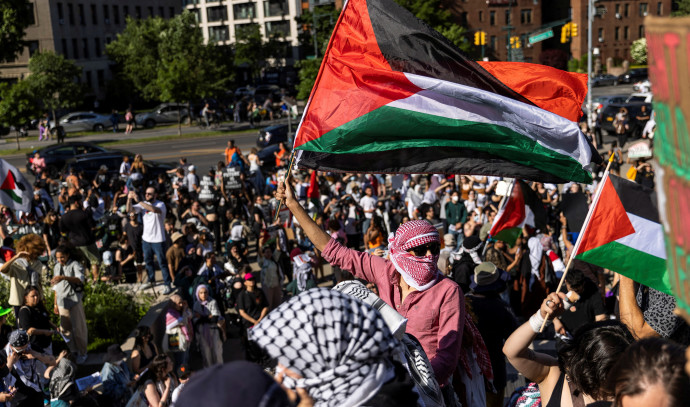Sayaras
Platinum Member
- Nov 13, 2023
- 4,597
- 2,631
- 928
Look at their illiterate spelling of Hitler. LoL.
From:

"Swastika on the walls of Jerusalem's Zion Gate. Arab feelings in 1936"
1936 was not a good year for democracy. The Fascist countries were seen as successful by many people. Every step taken by Hitler or Mussolini met with hesitation and trepidation on the part of the leaders of the free world. Hitler armed Germany, contraven-ing the Treaty of Versailles. The Wehrmacht marched to the Rhineland; this was a blatant violation of the Locarno Pact, according to which Germany was to keep the area demilitarized. France, which was directly affected by this move, reacted merely with protests.
During that same year, 1936, a high-ranking political refugee came to Jerusalem — Haile Selassie, Emperor of Ethiopia. The Emperor's exile symbolized a loss of deterrent power on the part of Britain, which could not prevent Ethiopia from falling to the Italians. The Arabs of Jerusalem closely observed this ally of Britain — now an exiled refugee, a living symbol of the change in the balance of world power.
Mussolini, the Italian dictator, displayed much interest in the Arabs. The dream of "II Duce" was to transform the Mediterranean into an Italian sea, as it had been during the glorious days of the Roman Empire. But fulfillment of this vision was hampered by the British Navy. Mussolini therefore sought an ally against the common enemy, Britain. Italian propaganda began to present him as the "Protector of Islam." He quickly found what he was looking for in the leader of the Palestinian Arab national movement, the Mufti, Haj Amin al-Husseini.
In Jerusalem, the Arabs knew that the time was right for demanding concessions from Britain. Swastikas and slogans expressing their feelings were inscribed upon the walls of the city. Against this international political background an Arab revolt broke out in Palestine.
From:
Lossin, Yigal. (1983). Pillar of Fire: The Rebirth of Israel--a Visual History. Israel: Shikmona Publishing Company, p.221
arch.
arch.
"Swastika on the walls of Jerusalem's Zion Gate. Arab feelings in 1936"
1936 was not a good year for democracy. The Fascist countries were seen as successful by many people. Every step taken by Hitler or Mussolini met with hesitation and trepidation on the part of the leaders of the free world. Hitler armed Germany, contraven-ing the Treaty of Versailles. The Wehrmacht marched to the Rhineland; this was a blatant violation of the Locarno Pact, according to which Germany was to keep the area demilitarized. France, which was directly affected by this move, reacted merely with protests.
During that same year, 1936, a high-ranking political refugee came to Jerusalem — Haile Selassie, Emperor of Ethiopia. The Emperor's exile symbolized a loss of deterrent power on the part of Britain, which could not prevent Ethiopia from falling to the Italians. The Arabs of Jerusalem closely observed this ally of Britain — now an exiled refugee, a living symbol of the change in the balance of world power.
Mussolini, the Italian dictator, displayed much interest in the Arabs. The dream of "II Duce" was to transform the Mediterranean into an Italian sea, as it had been during the glorious days of the Roman Empire. But fulfillment of this vision was hampered by the British Navy. Mussolini therefore sought an ally against the common enemy, Britain. Italian propaganda began to present him as the "Protector of Islam." He quickly found what he was looking for in the leader of the Palestinian Arab national movement, the Mufti, Haj Amin al-Husseini.
In Jerusalem, the Arabs knew that the time was right for demanding concessions from Britain. Swastikas and slogans expressing their feelings were inscribed upon the walls of the city. Against this international political background an Arab revolt broke out in Palestine.


